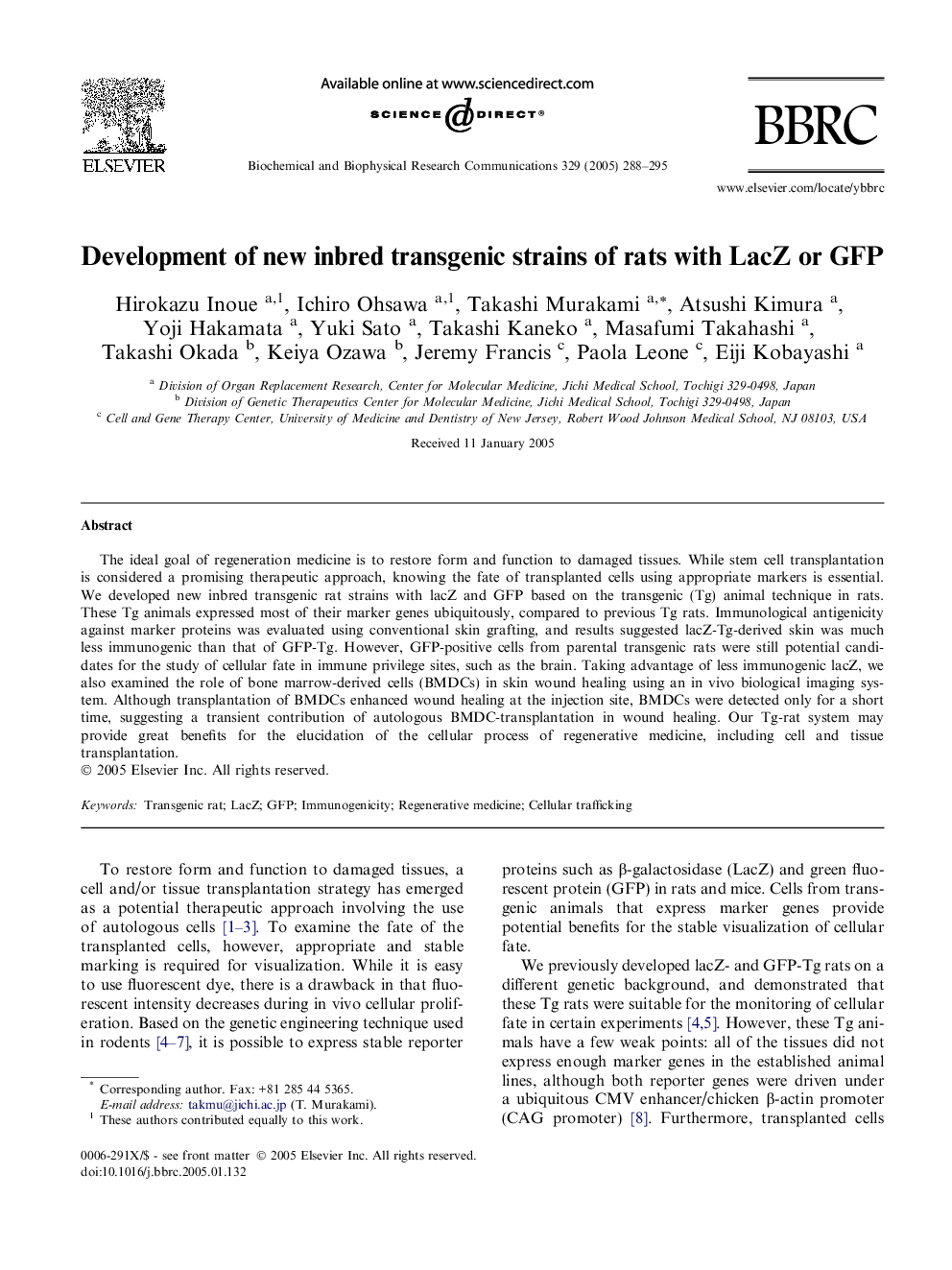| Article ID | Journal | Published Year | Pages | File Type |
|---|---|---|---|---|
| 10771805 | Biochemical and Biophysical Research Communications | 2005 | 8 Pages |
Abstract
The ideal goal of regeneration medicine is to restore form and function to damaged tissues. While stem cell transplantation is considered a promising therapeutic approach, knowing the fate of transplanted cells using appropriate markers is essential. We developed new inbred transgenic rat strains with lacZ and GFP based on the transgenic (Tg) animal technique in rats. These Tg animals expressed most of their marker genes ubiquitously, compared to previous Tg rats. Immunological antigenicity against marker proteins was evaluated using conventional skin grafting, and results suggested lacZ-Tg-derived skin was much less immunogenic than that of GFP-Tg. However, GFP-positive cells from parental transgenic rats were still potential candidates for the study of cellular fate in immune privilege sites, such as the brain. Taking advantage of less immunogenic lacZ, we also examined the role of bone marrow-derived cells (BMDCs) in skin wound healing using an in vivo biological imaging system. Although transplantation of BMDCs enhanced wound healing at the injection site, BMDCs were detected only for a short time, suggesting a transient contribution of autologous BMDC-transplantation in wound healing. Our Tg-rat system may provide great benefits for the elucidation of the cellular process of regenerative medicine, including cell and tissue transplantation.
Related Topics
Life Sciences
Biochemistry, Genetics and Molecular Biology
Biochemistry
Authors
Hirokazu Inoue, Ichiro Ohsawa, Takashi Murakami, Atsushi Kimura, Yoji Hakamata, Yuki Sato, Takashi Kaneko, Masafumi Takahashi, Takashi Okada, Keiya Ozawa, Jeremy Francis, Paola Leone, Eiji Kobayashi,
